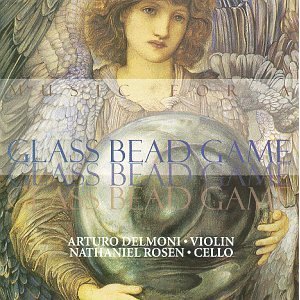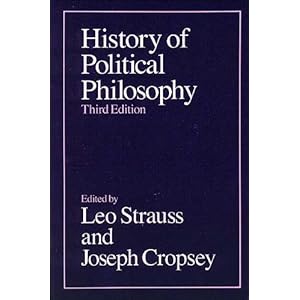[ by Charles Cameron — cross-posted from Sembl — first in a series on the inspirations & developments that led to Sembl, & the aspirations that flow from them ]
.

.
Hermann Hesse is just about due for a revival.
While other novelists on the whole explored the “real world” around them, the outside world, the world of other people and things, Hermann Hesse was concerned with the “inner” world – the world of hopes, dreams, distress, anguish, rage and insight. With his 1927 novel Steppenwolf, he introduced us to the “dark side” of ourselves, our “shadow” to use Jung’s term, long before Star Wars, longer before the Sith Lord Cheney committed the United States to work “sort of the dark side, if you will … to spend time in the shadows in the intelligence world.” And if Steppenwolf showed us our shadow, in his earlier novel Siddhartha (1922) he had already shown us the light – in a deliciously sensual revisioning of the young Buddha‘s ascetic purity.
Siddhartha and Steppenwolf between them provided cover for generations of young idealists coming to terms with their own dreams and nightmares, but it was in his final great novel Das Glasperlenspiel (1943), known in English as The Glass Bead Game or Magister Ludi, which won him the Nobel Prize in Literature while confusing and losing many of his admirers — and inspiring beyond measure those who stayed with him.
Hesse’s grand vision was of a game played by the members of a scholarly caste – monastic Brahmins of a secular, post European world – whose purpose, pleasure and play it was to bring all human culture into one architecture, one music, woven of similarities, parallelisms, patterns, archetypes.
As an architecture of insights, Hesse spoke of this great game of his as “harmoniously building the hundred-gated cathedral of Mind.” In musical terms, he described the game as a virtual music in which “ideas” rather than “melodies” would be harmonized or held in counterpoint:
All the insights, noble thoughts, and works of art that the human race has produced in its creative eras, all that subsequent periods of scholarly study have reduced to concepts and converted into intellectual values the Glass Bead Game player plays like the organist on an organ. And this organ has attained an almost unimaginable perfection; its manuals and pedals range over the entire intellectual cosmos; its stops are almost beyond number.
And the game’s ultimate destination – besides the creation of an overarching synthesis uniting sciences and arts, great leaps of discovery and profound flights of imagination?
Every transition from major to minor in a sonata, every transformation of a myth or a religious cult, every classical or artistic formulation was, I realized in that flashing moment, if seen with a truly meditative mind, nothing but a direct route into the interior of the cosmic mystery, where in the alternation between inhaling and exhaling, between heaven and earth, between Yin and Yang, holiness is forever being created.
The ultimate aim is contemplative simplicity, meditation, a renewed sense of the sacred.
❧
It was not the characters in the novel, nor its plot, that won Hesse the Nobel Prize: there is hardly a female character in the entire book, the males are largely cardboard imitations of people, and the plot such as it is might have made a fine twenty page novella – no need there for a 550-page masterpiece.
No, it is the game itself that holds the imagination, as the Himalayas might hold the attention of one who had lived a lifetime in the lowlands. And catch hold the imaginations of brilliant minds it has.
Hesse’s old friend and rival Thomas Mann inscribed a presentation copy of his novel Doctor Faustus with the words: “To Hermann Hesse, this glass bead game with black beads.”
Christopher Alexander, the progenitor of pattern languages, distilled the essence of his thinking in his “Bead Game Conjecture”:
That it is possible to invent a unifying concept of structure within which all the various concepts of structure now current in different fields of art and science, can be seen from a single point of view. This conjecture is not new. In one form or another people have been wondering about it, as long as they have been wondering about structure itself; but in our world, confused and fragmented by specialisation, the conjecture takes on special significance. If our grasp of the world is to remain coherent, we need a bead game; and it is therefore vital for us to ask ourselves whether or not a bead game can be invented.
Manfred Eigen, Nobel laureate in Chemistry, wrote of his book on molecular biology with Ruth Winkler-Oswatitsch, Laws of the Game:
We hope to translate Hermann Hesse’s symbol of the glass bead game back into reality.
John Holland, father of genetic algorithms, told an interviewer:
I’ve been working toward it all my life, this Das Glasperlenspiel. It was a very scholarly game, starting with an abacus, where people set up musical themes, then do variations on it, like a fugue. Then they’d expand it to where it could include other artistic forms, and eventually cultural symbols. It became a very sophisticated game for setting up themes, almost as a poet would, and building variations as a composer. It was a way of symbolizing music and of building broad insights into the world.
If I could get at all close to producing something like the glass bead game I can’t think of anything that would delight me more.
❧
Mid-way between architecture and music, forming an arch between the arts and sciences, Hesse’s imaginative game has been construed on many levels and in many ways, serving the needs of molecular biology, artificial intelligence, architecture and more. But what of its nature as a game to be played?
From my point of view as a game designer, Hesse’s game is both an artwork – to be played as Bach or the blues are played – and a game – to be played as soccer or chess are played.
And what a game!












